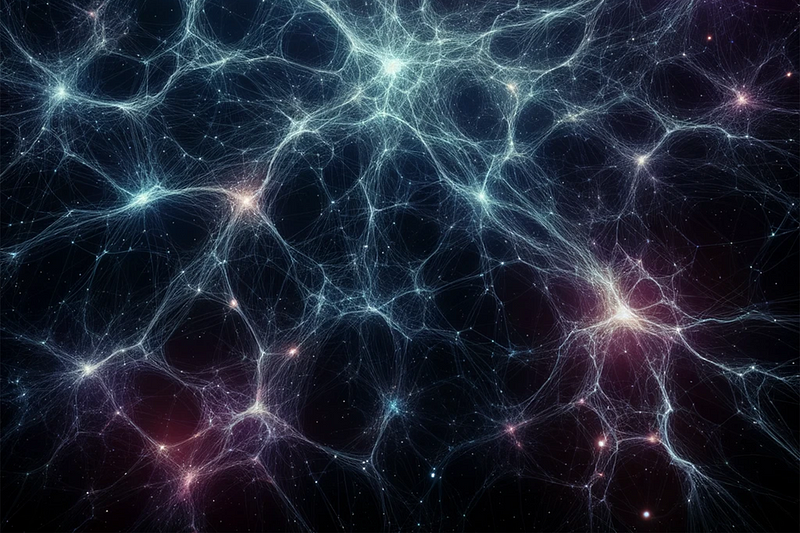Exploring the Mysteries of Dark Energy in the Expanding Universe
Written on
Chapter 1: Understanding Dark Energy
Is dark energy a consistent characteristic of space that remains unchanged across time and distance?
The concept of dark energy has its origins in the early 20th century, stemming from Albert Einstein’s introduction of the cosmological constant in his general relativity theory. This term was initially added to counteract gravity's pull and explain a static universe. However, Einstein later abandoned this idea, labeling it his “greatest blunder” after Edwin Hubble's discovery of the universe's expansion.
By the late 20th century, evidence from various observations—such as cosmic microwave background radiation and type Ia supernovae—indicated that not only is the universe expanding, but it is also accelerating. This observation suggested the presence of a repulsive force that opposes gravity on a cosmic scale, which came to be known as dark energy. The cosmological constant was revisited as a potential explanation for this phenomenon. Numerous experiments, including the Dark Energy Survey (DES), the Sloan Digital Sky Survey, and the Planck satellite, have since been conducted to investigate dark energy's properties. Nonetheless, its origin and functioning continue to puzzle cosmologists.
A collaborative team of international scientists utilized the Dark Energy Survey (DES) to analyze the characteristics of this enigmatic force propelling the accelerated expansion of the universe. The DES, one of the most extensive sky surveys, observed millions of galaxies and supernovae over a five-year period, covering roughly a quarter of the southern hemisphere.

Photo by Conner Baker on Unsplash
The researchers concentrated on type Ia supernovae, which result from the explosions of white dwarf stars that have reached a critical mass. These supernovae are exceptionally luminous, allowing them to be observed across vast distances, thus serving as effective indicators of cosmic expansion. By analyzing the variation in brightness and color of these supernovae relative to their distance, the team could reconstruct the history of the universe's expansion and the implications of dark energy.
The study, titled “The Dark Energy Survey: Cosmology results with ~1500 new high-redshift type Ia supernovae using the full 5-year dataset,” was published in the Astrophysical Journal. It presents an analysis of around 1,500 type Ia supernovae detected by the DES, covering a redshift range from 0.07 to 1.14, equating to a lookback time of approximately 1.2 to 8.5 billion years. This represents the most extensive and diverse collection of type Ia supernovae ever utilized in cosmological research, featuring many that are more distant and dimmer than previously documented.
The researchers employed various techniques to integrate supernova data with other cosmological indicators, including cosmic microwave background radiation, baryon acoustic oscillations, and weak gravitational lensing. They then evaluated these findings against different dark energy models, such as the cosmological constant and the wCDM model, which permits a variable equation of state for dark energy.
The wCDM model is a modification of the standard Lambda-CDM framework, which posits that the universe consists of ordinary matter, dark matter, and dark energy. Unlike the cosmological constant, the wCDM model allows for a dynamic equation of state parameter (w), which gauges the relationship between dark energy's pressure and energy density.
Variations in the w parameter suggest differing characteristics and influences of dark energy on the universe's expansion and evolution. For instance, if w equals -1, dark energy corresponds to a cosmological constant, the simplest explanation for the observed acceleration. Conversely, if w is less than -1, dark energy is classified as phantom energy, which could lead to a Big Rip scenario, where all cosmic structures are torn apart by relentless expansion. If w is greater than -1, dark energy may be referred to as quintessence, indicating a potential deceleration and possible eventual recollapse in a Big Crunch.
The principal conclusion of the paper indicates that the data align with the cosmological constant model, suggesting that dark energy is a static feature of space that does not alter over time or distance. Additionally, the study provides new constraints for the wCDM model, indicating that dark energy's equation of state hovers near -1, the expected value for a cosmological constant. However, the research does not dismiss the potential for more intricate dark energy models that involve interactions with matter or variations across time and space.

Image generated with the assistance of DALL.3 showing an artistic depiction of the existence of dark matter
This achievement marks a significant milestone for the DES collaboration, comprising over 400 scientists from 25 institutions across seven countries. The paper contributes to a collection of research findings that encapsulate the final cosmological results from the DES, which concluded its observational phase in 2019. The DES data will continue to be analyzed for various scientific inquiries, including investigations into galaxy formation and evolution, the nature of black holes, and the testing of gravity and dark matter's properties.
In this video, "Surveying Dark Energy Across the Universe" with Ofer Lahav, viewers gain insights into the methodologies and implications of studying dark energy.
"Unveiling the Dark Universe with the Dark Energy Survey" offers a deeper understanding of the survey's findings and their significance in cosmology.
Thank you for reading! If you enjoyed this article, feel free to show your appreciation by clicking the clap icon. To support my work, consider buying me a coffee. Stay tuned for more exciting content!